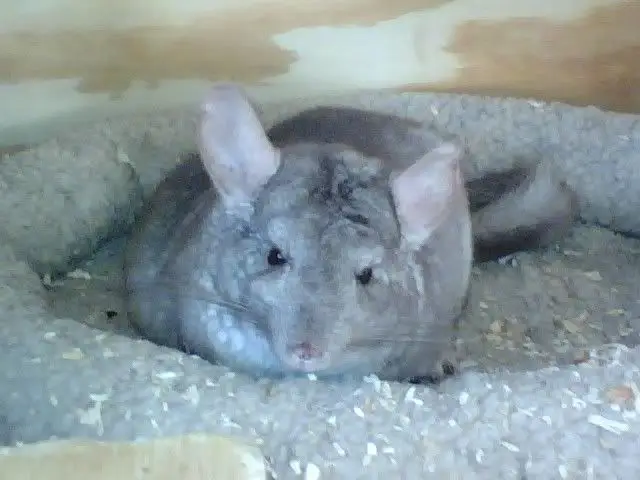Are you curious about chinchillas and their breeding habits? One of the most common questions asked about chinchillas is how many babies they have. In this article, we will reveal the truth about how many babies chinchillas have, and you might be surprised to learn that it’s not as straightforward as you might think.
Chinchillas are excellent breeders, but the number of babies they can produce in a single litter depends on various factors, including the species, age, and health of the chinchilla. Some species of chinchillas can have up to six babies, while others can have only one or two. The health of the mother chinchilla also plays a significant role in the number of babies she can produce.
In this article, we will not only answer the question of how many babies chinchillas have but also reveal five shocking truths about their breeding habits. We will explain the factors that determine the number of babies and offer tips on how to take care of a mother chinchilla during and after pregnancy.
Table of Contents
How Many Babies Do Chinchillas Have in a Litter?
In the event that you’re considering the number of children chinchillas that have in a litter, the response isn’t as clear as you would suspect. While two units for each litter are the most well-known number, a few chinchillas can have up to four or even six packs in a solitary litter. Then again, it’s likewise workable for a chinchilla to have just a single pack in a litter.
The number of packs in a litter can change contingent on variables like the age and soundness of the mother chinchilla, as well as the species. For the most part, chinchillas will have one to three litters each year, with each litter creating somewhere in the range of one and four packs.
It’s crucial to note that while chinchillas are magnificent reproducers, they require unique consideration during and after pregnancy to guarantee the strength of both the mother and her posterity. Giving an agreeable and safe climate, a decent eating routine and normal check-ups with a veterinarian can assist with guaranteeing a fruitful pregnancy and solid units.
while the most widely recognized number of units per litter for chinchillas is two, the number can differ contingent on different elements. With legitimate consideration and consideration, chinchillas can deliver one to four units for every litter and up to three litters each year. In the event that you’re anticipating rearing chinchillas, it’s pivotal to teach yourself about their remarkable reproducing propensities and furnish them with the consideration they need for a fruitful pregnancy and solid posterity.

How Old Are Chinchillas Before They Begin Having Babies?
It is essential to know when chinchillas reach sexual maturity and when it is safe for them to start having babies if you are considering breeding them. Although some pet shops may sell chinchillas as young as six weeks old, the majority of them reach physical maturity around the age of eight months. However, reputable pet stores and breeders typically won’t sell chinchilla kits until they are at least 12 to 16 weeks old.
It’s important to keep in mind that chinchillas can become sexually mature as early as eight weeks of age. This indicates that a female chinchilla who is eight weeks old could become pregnant. Notwithstanding, on the grounds that she hasn’t arrived at actual development, there’s a high opportunity she might battle essentially with the pregnancy, which could bring about the deficiency of the mother or the packs.
Chinchilla breeding should be done with extreme care and responsibility, and proper care during and after pregnancy is essential. Before breeding your chinchilla, it is best to wait until they are about eight months old and have reached physical maturity. This will guarantee the mother’s and her children’s health.
Although chinchillas can reach sexual maturity as early as eight weeks of age, they typically reach physical maturity around the age of eight months. To avoid potential problems, it is essential to wait until they are physically mature before breeding them. For the health of both the mother and her kits, it is essential to provide proper care during and after pregnancy.
How Long Are Chinchillas Pregnant?
Chinchillas have a significantly longer pregnancy than you could expect for a little well-evolved creature. Chinchillas regularly go through an incubation time of 110-111 days. To place that into viewpoint, rodents just have an incubation time of 21-23 days, though people are pregnant for roughly 280 days. This demonstrates that a chinchilla won’t bring forth its most memorable litter until it is roughly one year old.
It is crucial to remember that chinchillas commonly produce only one to two packs, or infants, per litter. Along these lines and the significant time frame they spend in the belly, rearing chinchillas needs cautious preparation and thought.
It is crucial to give your chinchilla the right food and care while you are pregnant. This might help with guaranteeing the strength of the mother and her youngsters. The mother chinchilla ought to have more than adequate opportunity to recover subsequent to conceiving an offspring, and the units ought to be maneuvered carefully to guarantee their well-being and security.
All in all, chinchillas have a growth time of around 110-111 days, which is astonishing. This demonstrates that a chinchilla won’t bring forth its most memorable litter until it is roughly one year old. Chinchilla rearing requires cautious preparation and thought, as well as satisfactory nourishment and care during pregnancy and after birth.
Understanding Chinchilla Reproduction: 5 Shocking Truths Revealed – Find Out Now!
Assuming you’re pondering rearing chinchillas, you ought to know that it’s not generally so natural as bringing together a male and female. While male and female coordinates normally team up really, there are significant contemplations to make. Regardless of their social nature, chinchilla sets of a similar sex can show predominant and forceful ways of behaving. Also, because of their sensitive nature, chinchilla fixing or fixing is exceptional.
In this way, in the event that you have a male and female pair, there is a decent opportunity that they will mate and bring forth kids. Understanding the intricacies of chinchilla expansion is central for anybody with any interest whatsoever in duplicating these charming creatures.


1. Introducing Mates
To raise chinchillas yet don’t as of now have a mate, you want to know how to present potential accomplices appropriately. While introducing a male and female chinchilla, it’s ideal to introduce them before the female enters estrus, which is the time span in which she will receptive to mate. By doing this, the pair might be bound to be viable and the gamble of the forceful way of behaving might be decreased.
In case of any troubles during the presentation cycle, it is fundamental to furnish the male chinchilla with a solid area to escape to. The two creatures might be less inclined to be hurt or harmed thus. You can improve the probability of a sound litter of chinchilla packs and a fruitful mating by utilizing the fitting presentation techniques.
2. Breeding Patterns of Chinchillas: Mating Year Round and Multiple Litters Per Year
Chinchillas are known for their year-round mating habits. A male and female pair can produce two litters per year, though it is possible to have anywhere between one and three litters annually.
Interestingly, female chinchillas can become pregnant almost immediately after giving birth, so it’s important to be aware of this when considering breeding your chinchillas. Understanding the breeding patterns of chinchillas is essential for anyone interested in breeding them.

3. Pregnancy in Chinchillas
The gestation period for chinchillas is about 111 days, which is relatively long. There are typically one to six kits in a litter, with two to three being the typical number. The female chinchilla may appear a little more “fluffy” as the pregnancy progresses.
It is essential to handle your female chinchilla with extreme caution if you know or suspect that she is pregnant. She should be left alone as much as possible and her water and food intake should be monitored. It is essential to immediately take her to an exotic vet if anything seems odd or unsettling.
Fortunately, female chinchillas are mostly self-sufficient and do not require any special care during pregnancy. However, for a safe and healthy pregnancy, it is still essential to monitor them closely.
3.1. What to Expect When Your Chinchilla is Giving Birth
Female chinchillas become less active and may even stop eating as the time for birth approaches. It is essential to take her to the vet if this behavior continues after the kits have been born. It is best to keep some chinchillas away from males or cagemates until after the birth because they may also exhibit mild aggression.
Chinchillas are unique in that both males and females actively participate in the care and development of their offspring. Because male chinchillas do not attack their offspring, you can leave the entire family together without worrying.
4. Offspring
Chinchilla kits, or offspring, are fascinating animals. They are born with their eyes open and all of their fur intact. Amazingly, most kits are up and moving around the cage within an hour of birth, ready to explore their surroundings.
They will look like their parents, but their heads are usually a little bigger than the rest of their bodies. In any case, this will level out as they develop and develop into sound grown-up chinchillas.
5. Weaning
At the point when chinchilla units are conceived, they are completely evolved and prepared to move around on their own soon. Before becoming sexually mature, they will nurse from their mother for six to eight weeks. After this point, it is essential to separate the kits based on their sex and from their parents to prevent any potential inbreeding.
Both the parent animal and its offspring can suffer from a variety of health issues as a result of inbreeding, and if a female is mated too early, she may experience serious health issues during her pregnancy and delivery. Despite the fact that they are technically sexually mature after weaning, chinchillas typically reach physical maturity between the ages of eight months and one year.
Conclusion
“Understanding the intricacies of chinchilla breeding and care is essential for those interested in introducing mates, breeding patterns, pregnancy, giving birth, offspring, and weaning. With proper attention and care, chinchillas can thrive and bring joy to their human companions.”
Dr. Chandrika Choudhary
Tweet
In conclusion, breeding and raising chinchillas requires careful planning and attention to detail. It is important to keep in mind the different aspects of chinchilla breeding, from introducing mates to separating the offspring. By following the guidelines and advice given in the above responses, chinchilla breeders can ensure the health and well-being of their animals and produce happy, healthy offspring.
Remember to always monitor your chinchillas closely and seek the help of a veterinarian if any issues arise. With proper care and attention, chinchillas can make wonderful pets and fascinating breeding projects.


